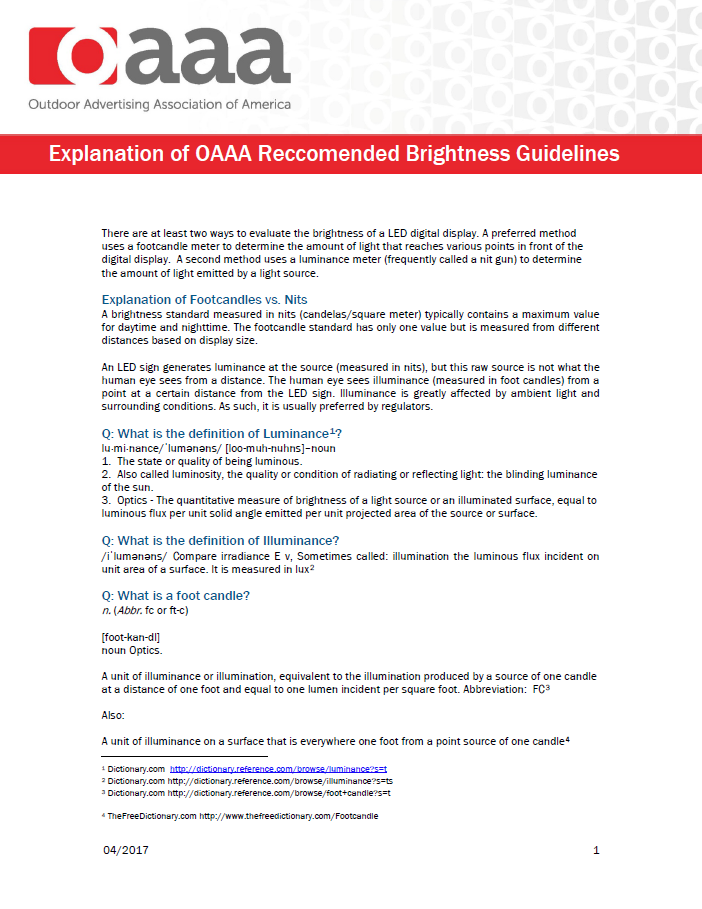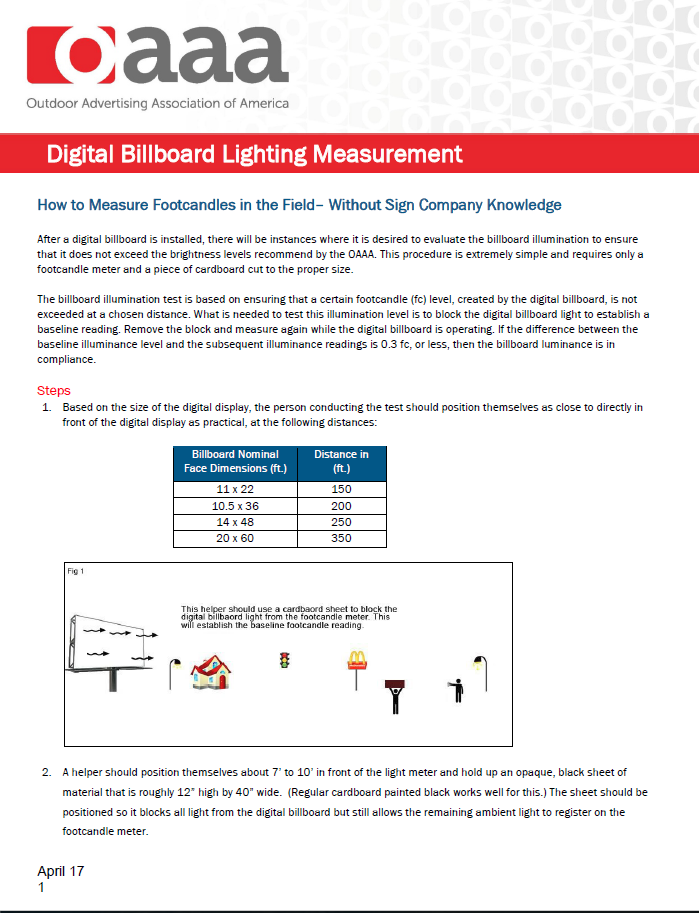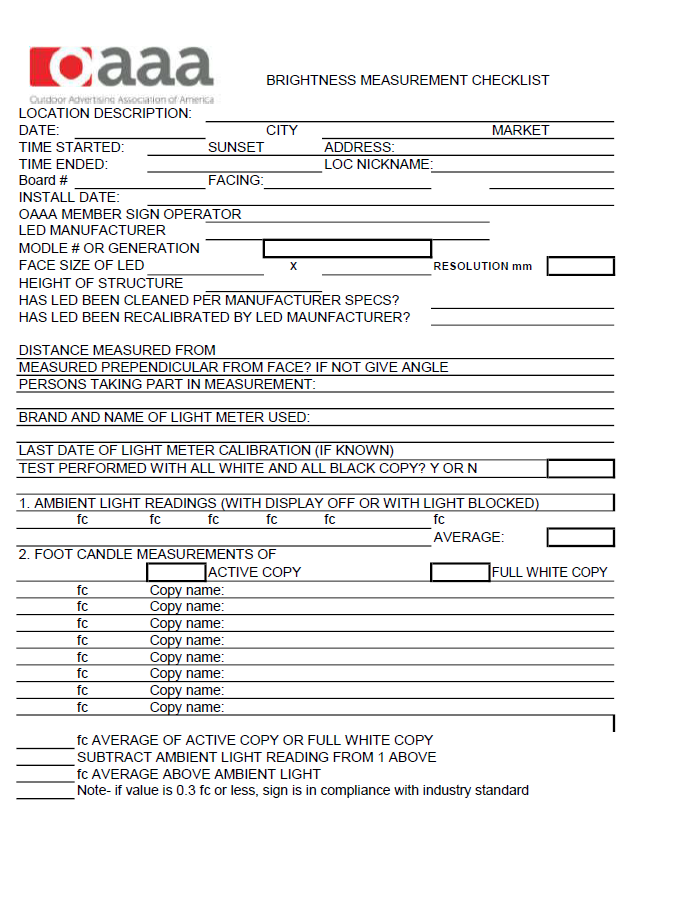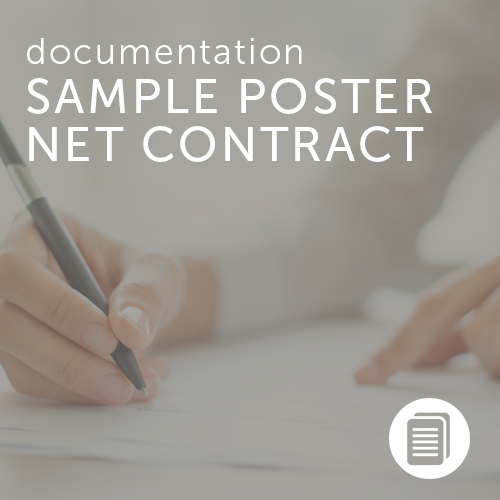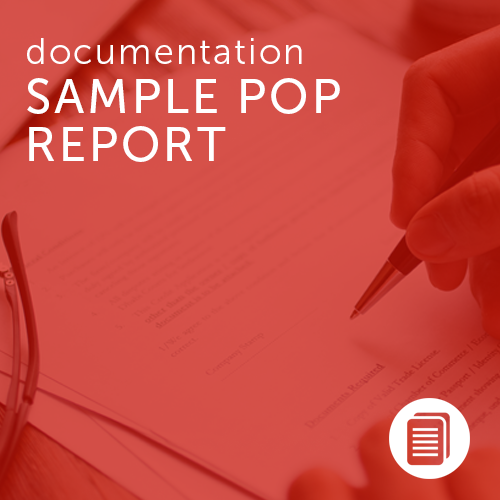Modified: 1 year
Modified: 1 year
Advertiser Standard Business Practices
Core Data Exchanges and Platform Analysis
Digital Place-Based OOH Standards & Practices
OOH Print Production Specifications
MMM/Attribution Modeling Glossary
Mobile & Social Application Guidelines
OOH Attribution Best Practices
Out of Home Data Exchange API Guidelines
Photography Guidelines and Best Practices
Understanding Out of Home Data and its Uses
Modified: 1 year
Business Guidelines
Sample Documents
OAAA Principles for Privacy & Data
Modified: 1 year
OOH operators and display manufacturing partners have mutually elected to define basic monitoring requirements for a functioning LED digital display. These standards will help improve the quality and performance of digital OOH by providing customers with a more consistent and reliable advertising product.
OAAA Digital Display Monitoring API Specifications
Modified: 1 year
Staff contact
Kerry Yoakum
VP, Government Affairs
OAAA members have adopted a set of voluntary industry business standards and practices. OAAA endorses these principles and procedures by encouraging its members to operate in conformance with these guidelines and practices.
OAAA Digital Billboard Brightness Guidelines
OAAA Digital Security Guidelines
OAAA Recycling Business Practices
OAAA Recommended Lighting Guidelines
How to Measure Footcandles in the Field
How to Measure Nits in the Field
Modified: 1 year

OAAA members consider safety and health on job sites as a top priority in the workplace. OAAA and the OOH industry support common-sense Occupational Safety and Health Administration (OSHA) legislation that promotes a safe and healthy work environment.
OSHA was formed in April 1971 as part of the Department of Labor to administer the Williams-Steiger Occupational Safety and Health Act. The Act requires employers to provide a safe work place for their employees and places heavy responsibilities on foremen, supervisors, and managers to assure a safe work environment.
The OOH advertising industry is mainly governed by OSHA regulations contained in:
- Code of Federal Regulations 29 Part 1910 – General Industry
- Code of Federal Regulations 29 Part 1926 – Construction
The “General Duty Clause” of the Act mandates:
- Each employer shall furnish to each of his employees a place of employment which is free from recognized hazards that are causing or likely to cause death or serious harm to employees.
- Each employer shall comply with the Occupational Safety and Health Standards promulgated under this Act.
- Each employee shall comply with the Occupational Safety and Health Standards, and all rules, regulations, and orders issued pursuant to this Act which is applicable to his own actions and conduct.
OSHA’s broad responsibilities include:
- Promulgating health standards
- Conducting workplace inspections
- Issuing citations and proposed penalties
- Restraining imminent danger situations by seeking injunctive relief
- Approving state OSHA plans.
OSHA uses 10 regional offices to carry out its duties. Each office services a number of area offices. Twenty-six states have state approved plans and the local contact will be the state OSHA officer.
Penalties for OSHA violations, along with the range of permissible civil and criminal penalties for each violation, are generally defined by statute. The act requires minimum penalties for certain classifications of violations as follows (listed in descending degree of seriousness with permissible civil penalty ranges):
- Willful: $5,000 to $70,000 for each violation.
- Repeated: $5,000 to $70,000 for each violation.
- Serious: up to $7,000 for each violation.
- Other than serious: up to $7,000 for each violation.
- De Minimis: Generally no penalty assessed.
- Egregious: A flagrant violation, the effect of the penalty is multiplied and the penalty applies to the entire company in all locations.
Criminal sanctions are severe if an employer willfully violates any standard, rule or order and causes the death of an employee and can result in a fine up to $10,000 and imprisonment for no more than six months.
In addition to the aforementioned regulations, OOH advertising operators should be aware of the OSHA regulations governing:
The industry currently enjoys a variance from the OSHA general industry standards for fixed ladders contained in 29 CFR 1910.27(d)(1)(ii), 29 CFR 1910.27(d)(2). Click here for a copy of the variance. This variance is generally referred to as the Qualified Climber Program (Gannett Variance). For more information regarding the Qualified Climber Program, please contact Kerry Yoakum at OAAA.
Modified: 1 year
Since its formation in 1891, safety has been a core value of OAAA’s mission. To that end, this section contains information to improve the OOH advertising product through industry standards, promotion of safe operations, and updates on industry technological innovations.
On the regulatory front, OAAA stays in close, regular contact with federal agencies, including the Occupational Safety and Health Administration (OSHA), Federal Highway Administration (FHWA), and many other groups and agencies to make sure the industry’s voice is heard so new standards and regulations support our members’ interests, are easy to understand, and enable OAAA member companies to remain competitive locally and nationally.
OAAA’s commitment to safety provides opportunities for officials in member companies to become industry leaders in national regulatory activities, participate in industry standard committees, and develop association policies and standards. The Safety, Standards & Technology (SST) committee and industry events are also great venues for networking and sharing information for those OAAA members with similar interests and concerns.
OAAA Safety Committees
The Safety, Standards & Technology (SST) and the OAAA ad-hoc Safety Committees promote safety and voluntary operational practices for the OOH advertising industry.
OAAA SST Committee:
Richard Peterson, Porter Advertising (Chair)
John Barrett, Barrett Outdoor
Ken Guy, Link Media Outdoor
Mike Helm, Dakota Outdoor Advertising
Steve Hillwig, OUTFRONT Media
Orly Ortiz, Clear Channel Outdoor
Bryan Parker, Clear Channel Outdoor
Ryan Poarch, Adams Outdoor Advertising
Bobby Switzer, Lamar Advertising Company
Micky Vint, Lamar Advertising Company
Chris Zukin, Meadow Outdoor Advertising
OAAA ad hoc Safety Committee:
Bob Chesonis, OUTFRONT Media
Jim Poage, Formetco
Chuck Wigger, Lamar Advertising Company
Kerry Yoakum-OAAA Staff liaison
Member Resources
Industry Safety and Operations Regulations
LED Lighting Guidance
OAAA Display Monitoring API
Related Links
Occupational Safety and Health Administration (OSHA)
Federal Highway Administration (FHWA)
Modified: 1 year
